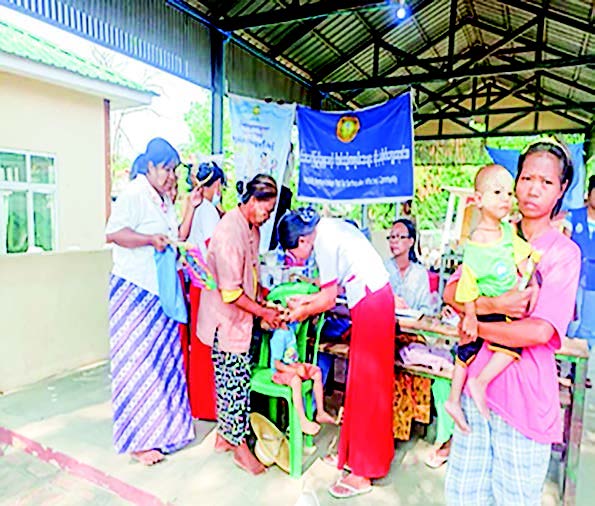By Dr Than Lwin Tun
EARTHQUAKES are sudden, devastating events that disrupt not only the built environment but also the fundamental systems that support public health. In their aftermath, populations are frequently displaced, infrastructure is damaged, and basic services such as water, sanitation, and healthcare become severely limited. These conditions provide fertile ground for the rapid spread of infectious diseases. Therefore, timely and effective public health measures are essential to prevent and control these diseases and protect the health of affected populations.
Post-earthquake environments are characterized by collapsed buildings, overcrowded shelters, inadequate hygiene, and a lack of clean water. These conditions significantly increase vulnerability to communicable diseases. Waterborne diseases, such as diarrheal diseases, may spread through contaminated water supplies. Respiratory infections, including pneumonia and tuberculosis, can flourish in overcrowded shelters. In some areas, stagnant water left behind by disrupted infrastructure can become breeding grounds for mosquitoes, leading to outbreaks of vector-borne diseases like malaria and dengue fever and also wound-related infections such as Tetanus, and skin and soft tissue infections.
Rapid Needs Assessment: Conduct immediate health assessments to determine Disease risks, Health infrastructure damage, and Vulnerable populations, prioritize interventions and allocate resources effectively.
Disease Surveillance and Early Warning Systems: Establish emergency disease surveillance systems to monitor and detect outbreaks. This enables early detection of outbreaks and timely responses. Mobile clinics and rapid response teams should be deployed to monitor symptoms, collect data, and provide basic treatment and referrals.
Water, Sanitation, and Hygiene (WASH): Ensure access to safe drinking water via purification tablets, clean water tanks, or bottled water, promote hygiene through hand washing stations and hygiene kit distribution, construct emergency toilets and waste disposal systems and provide health education on safe food handling and personal hygiene.
Immunization Campaigns: Administer vaccines to prevent outbreak-prone diseases such as Oral Cholera Vaccine (OCV) (especially in vulnerable populations) and tetanus (especially in injured individuals) and use mobile vaccination units in camps and shelters.
Vector Control: Implement mosquito control measures, drain stagnant water, use insecticide-treated bed nets and monitor and report vector-borne diseases such as dengue and malaria.
Health Education and Risk Communication: Deliver clear and appropriate public health messages, including how to prevent infections, symptoms of common diseases, when and where to seek medical care and use radio, posters, community volunteers, and local leaders to disseminate information.
Community Engagement and Participation: Involve community members in hygiene promotion, vector control activities, disease surveillance, and community ownership to increase compliance and effectiveness of interventions.
Coordination and Multisectoral Collaboration are also important for public health intervention.
In addition, post-disaster recovery public health measures are vital for preventing and controlling infectious diseases in the aftermath of an earthquake. A proactive, coordinated, and community-based approach can significantly reduce the risk of disease outbreaks and save lives.


